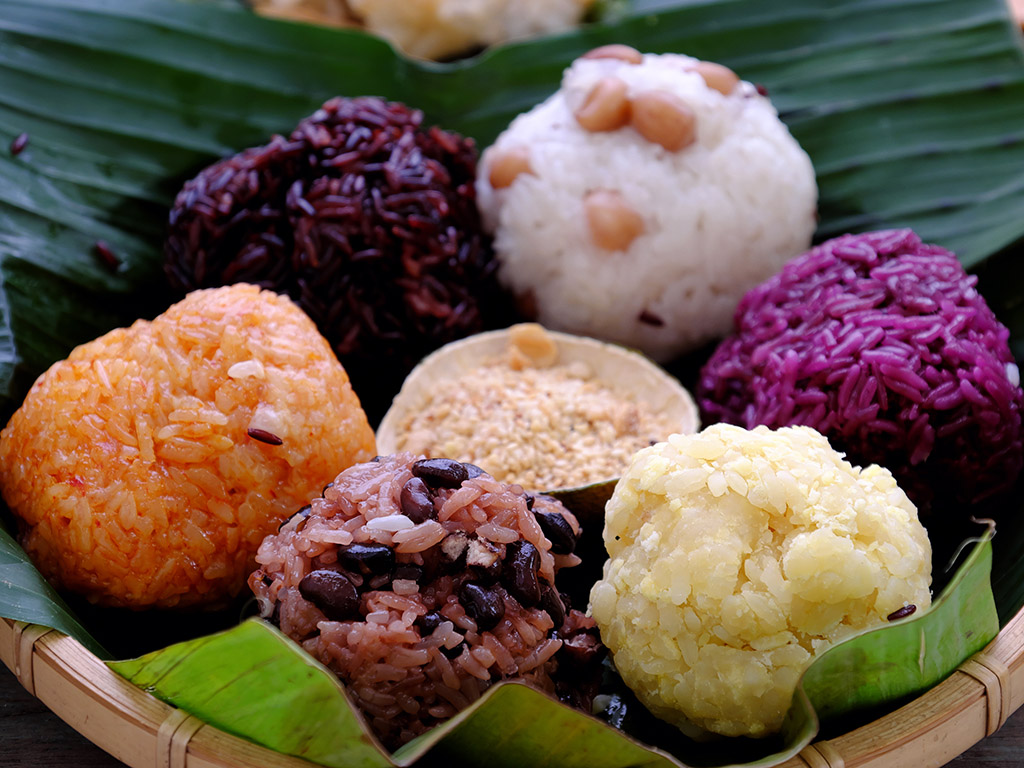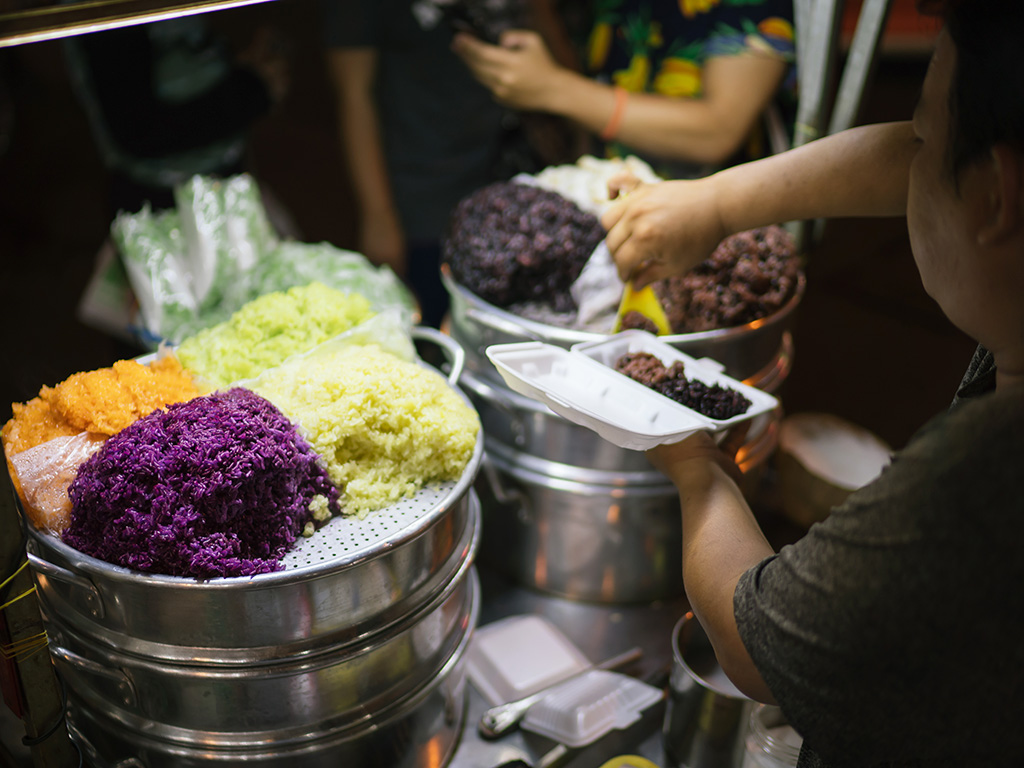Xoi – A Complete Guide to Vietnamese Sticky Rice – Vietnamnomad
Chào mừng bạn đến với pgdgiolinhqt.edu.vn trong bài viết về Xoi chúng tôi sẽ chia sẻ kinh nghiệm chuyên sâu của mình cung cấp kiến thức chuyên sâu dành cho bạn.
What is xoi?
For those countries heavily relying on wet rice cultivation like Vietnam, rice and rice-based products play such a significant role in our culture and tradition. The image of a small pack of xoi grabbed in a banana leaf has been strongly connected with many Vietnamese generations.
Xoi (xôi) – or steamed sticky rice – accompanies our people from day-to-day meals to all the important events of our life. A ceremony would be missing without the presence of xoi on the offering tables and the ancestors’ altars. Across the country, xoi tells different stories and displays a breadth of culinary history and culture of our people. Add xoi to your must-try list and carry on reading to find out why.
The origin of xoi
Rice has been with us since the birth of the nation. Back in the day, wet rice was not the major crop cultivation; instead, glutinous rice was the main staple food brought to Vietnam by the ancient Tay Thai ethnic group and the Mon-Khmer migrants. Over time, with the prevalence of regular rice (or white rice), glutinous rice has transformed from daily staple food to an indispensable offering for important celebratory events. Nowadays, xoi is among the most diverse foods in Vietnam. Thanks to the various local ingredients and cooking methods, almost every city of the 63 cities across Vietnam has its own style of xoi, either plant-based or meat-based. Now, let’s look at the diversity of sticky rice in Vietnamese cuisine.

Types of xoi
A full list of xoi varieties must go on forever; however, they can be generally categorized into sweet and savory sticky rice due to their ingredients. All the sweet sticky rice snacks are vegan, while savory sticky rice is accompanied by different kinds of meat and requires more cooking steps.
1. Sweet sticky rice
The creativity of sweet sticky rice is limitless, but in general, sweet sticky rice is usually made with glutinous rice, beans, and fruits. Here are some common versions of sweet sticky rice.
Xoi dau
Xoi ngu sac
Xoi vo
Xoi sau rieng
2. Savory sticky rice
Sticky rice itself contains a high value of sugar and is often added with sweet ingredients like coconut milk and coconut shreds; so, sometimes it feels more like a dessert than a main dish. This is when people came up with different cooking methods and the addition of different kinds of meat-based ingredients, making them more diverse in their look and taste. Here are some common versions of savory sticky rice.
Xoi man
Xoi thit kho
Xoi khuc
Xoi xeo
Xoi chien
How to eat xoi?
While sweet sticky rice is vegetarian-friendly and often eaten as breakfast or evening snacks, savory versions are more the main dish and can be eaten anytime during the day.
Sweet sticky rice with many colors and flavors is displayed on steam pots. Every time the vendor owner lifts the lid, a huge puff of steam is released, carrying the pleasant fragrance into the air and attracting any bypassers. Sweet sticky rice, to make it sweet, is served with a kind of xoi of your choice, a layer of mung bean paste, muoi me – sugar with a pinch of salt and roasted peanuts, and fresh coconut shreds. So, although this is a takeaway steamed food, you will still get all the flavors you can imagine. Traditionally, xoi is grabbed in a banana leaf or a lotus leaf, so that it will have a leafy taste and intimate sense; however, due to large demand and profitable reasons, you will find xoi is mostly sold in a foam take-out container instead. A box of sweet sticky rice ranges from 10,000 VND – 20,000 VND ($0.5 – 1$).
Unlike sweet sticky rice which is sold in many varieties at one food stall, savory sticky rice is more specialized, which means you cannot get a box of xoi xeo or xoi khuc at a xoi man stall. Xoi man is often sold together with banh mi. All the ingredients are displayed on a glass showcase counter, so you can easily point at whatever you want for your food; xoi xeo and xoi chien can only be found on the street food stalls mostly in the mornings and in the late afternoon respectively; xoi khuc is more of luck as it is often sold in a bamboo basket on the back of a bicycle riding through streets and alleys, notifying its presence with a street calls from a speaker in the bike’s front basket. Despite serving as the main meal, these savory sticky rice dishes are mostly takeaways, except for xoi thit kho – sticky rice with caramelized braised pork. A portion of savory sticky rice can cost from 20,000 VND – 50,000 VND ( $1 – $2.5) depending on the toppings you choose and the location you are having your food.

We hope you can at least try one of these xoi dishes, knowing that it is not only a flavorful must-try Vietnamese street food but also an unforgettable cultural experience of your travel.
